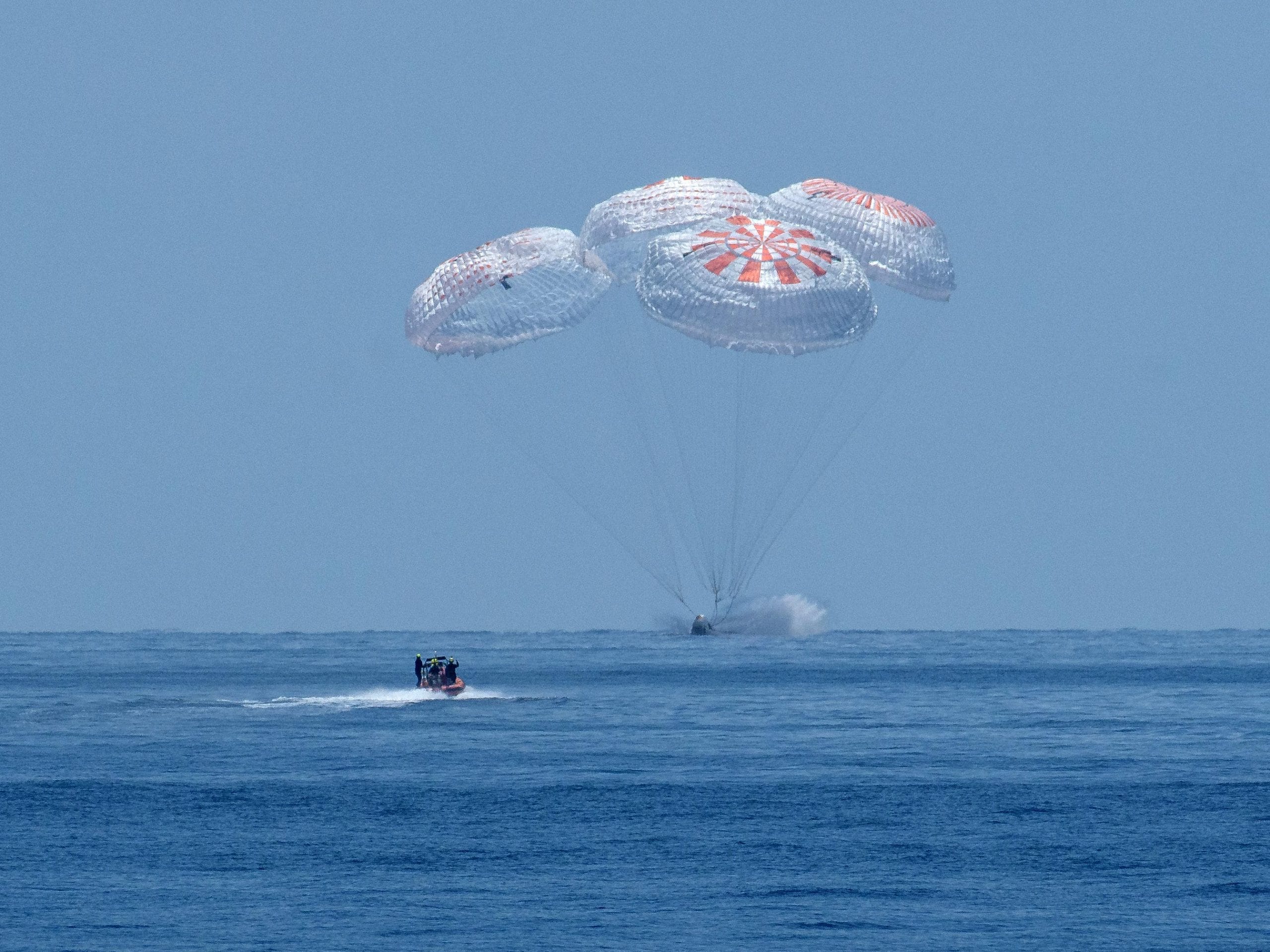On the afternoon of October 20, 2023, the SpaceX Dragon spacecraft marked a significant milestone in its ongoing contributions to space exploration by successfully splashing down in the Gulf of Mexico, approximately 200 miles off the coast of Florida. This event is part of a routine process that has become common in the recent evolution of space travel, where reusable spacecraft play a crucial role in transporting cargo and crew back and forth between Earth and the International Space Station (ISS).
The mission, designated as CRS-29 (Commercial Resupply Services), was launched from the Kennedy Space Center on October 15, 2023. The Dragon spacecraft’s flight was a key phase in NASA’s broader plan to develop reliable and efficient access to low Earth orbit, with the primary objective being the delivery of supplies and science experiments to the ISS. Following its successful launch, the Dragon capsule spent approximately five days in orbit, during which it facilitated the unloading of critical cargo to support ongoing scientific research aboard the station.
Upon entering Earth’s atmosphere, the Dragon capsule experienced intense heat and pressure, typical of re-entry procedures. However, the spacecraft is designed to withstand these challenging conditions. By employing its heat shield technology, the capsule safely navigated through the atmosphere, slowing down significantly before deploying its parachutes to ensure a gentle touchdown in the designated splashdown zone.
SpaceX’s ability to conduct these missions reliably is underscored by the growing reliance on commercial partners in space exploration. The private company has established itself as a leader in the aerospace sector, with a track record that includes not only resupply missions to the ISS but also crewed flights, providing NASA with affordable options for space access. This particular mission carried a range of scientific payloads, including experiments focused on material science and biological research. The successful return of these items marks an essential step in both the scientific community’s understanding of various phenomena in microgravity and the ongoing development of technology geared for deep space exploration.
For NASA, collaboration with SpaceX aligns with its strategic goals of reducing costs while enhancing the frequency and reliability of space missions. As commercial partnerships continue to flourish, the space agency is positioning itself to take on more ambitious projects, including future crewed missions to the Moon and Mars under the Artemis program.
The Dragon spacecraft is inherently designed to be reusable, which significantly reduces the cost of each mission. This feature, coupled with its advanced technology and infrastructure, allows SpaceX to conduct multiple flights per spacecraft, stretching the value of each mission further. Subsequent missions are planned as part of ongoing contracts with NASA, solidifying the trajectory of future operational space missions.
The successful splashdown of the Dragon highlights the efficacy of SpaceX’s ongoing development and operational strategies, further validating its role in the global space economy. With numerous upcoming missions scheduled, the anticipation surrounding future launches continues to grow, reflecting the burgeoning interest in space exploration and commercialization.
As the world looks toward the next era of interplanetary exploration, missions like CRS-29 not only provide vital supplies to astronauts but also pave the way for new technologies and the potential colonization of other celestial bodies. Continued successes in such missions bolster public and private investment in space initiatives, signaling a sustained commitment to exploring the final frontier.
NASA Administrator Bill Nelson commended the mission, stating that the successful return of the Dragon spacecraft is a testament to what is achievable through public-private partnerships. He noted that science persists even in tumultuous times, reflecting the unwavering human spirit for discovery. The collaboration with SpaceX epitomizes the united effort to push boundaries and set the stage for future generations of space exploration.
The next steps for SpaceX involve preparing for subsequent missions, which will further expand their reach into outer space. As technology progresses and new challenges arise, the importance of successful missions remains paramount. The achievements of the Dragon spacecraft serve as a reminder of human ingenuity and perseverance in the quest for knowledge beyond our planet.


